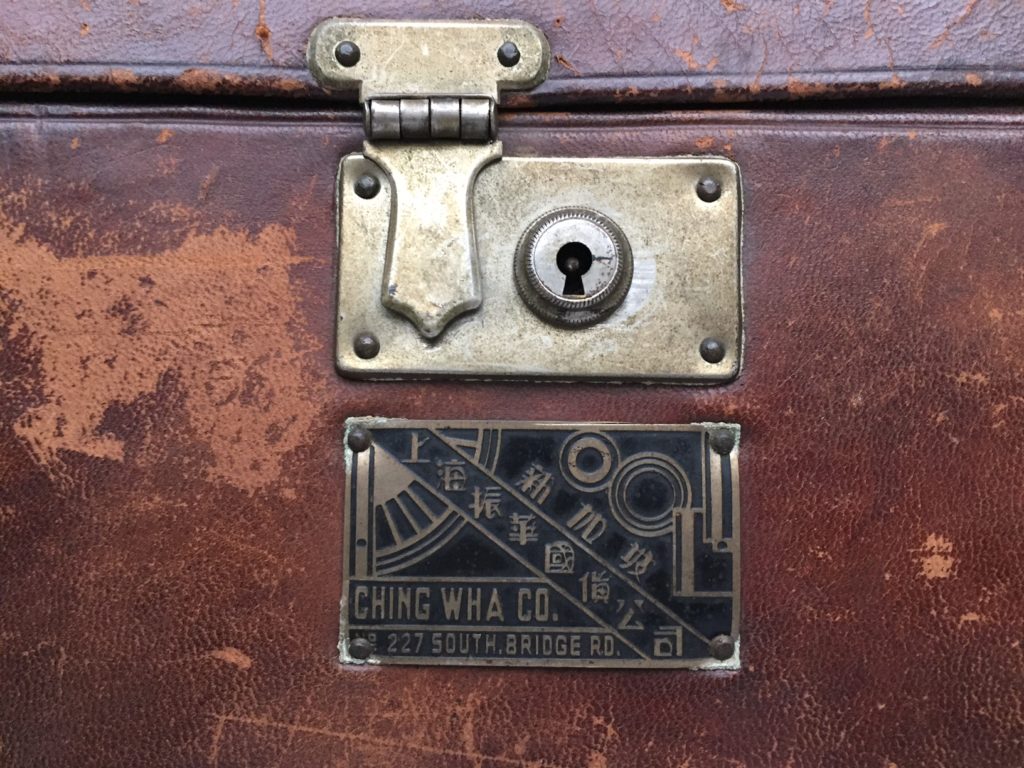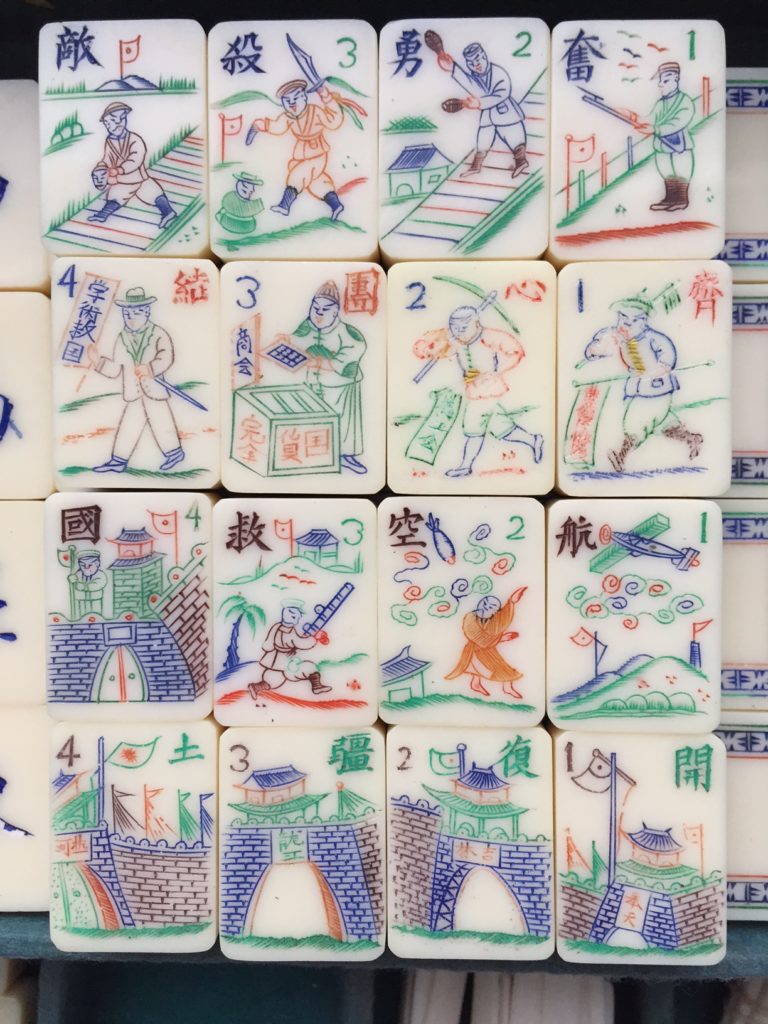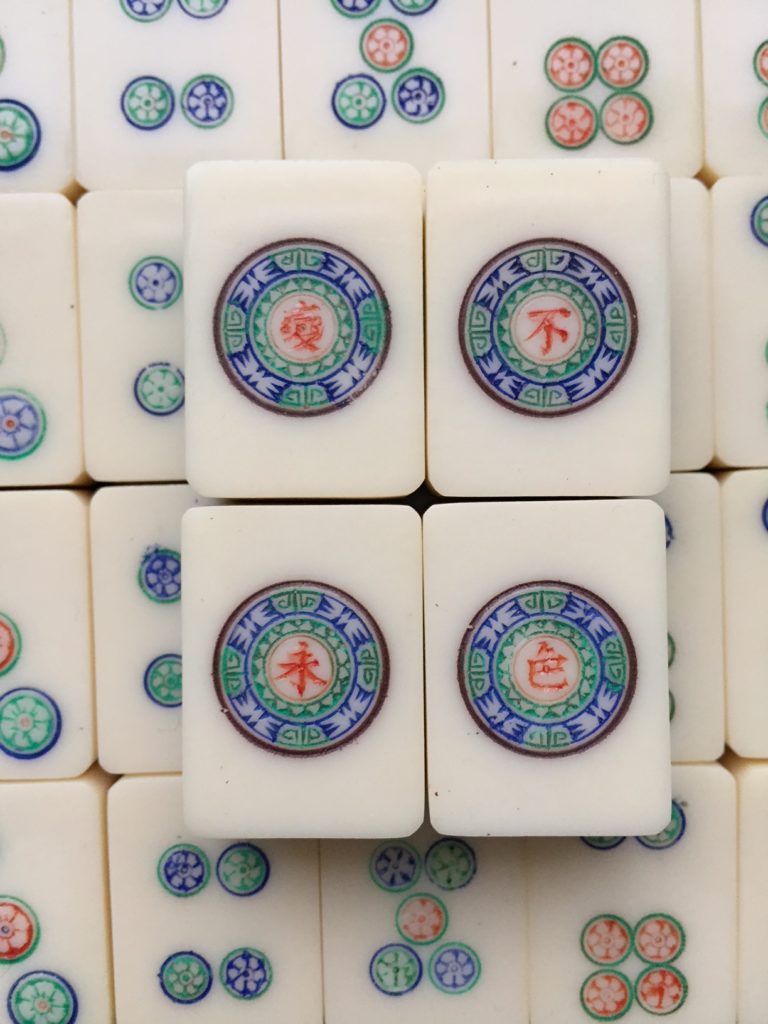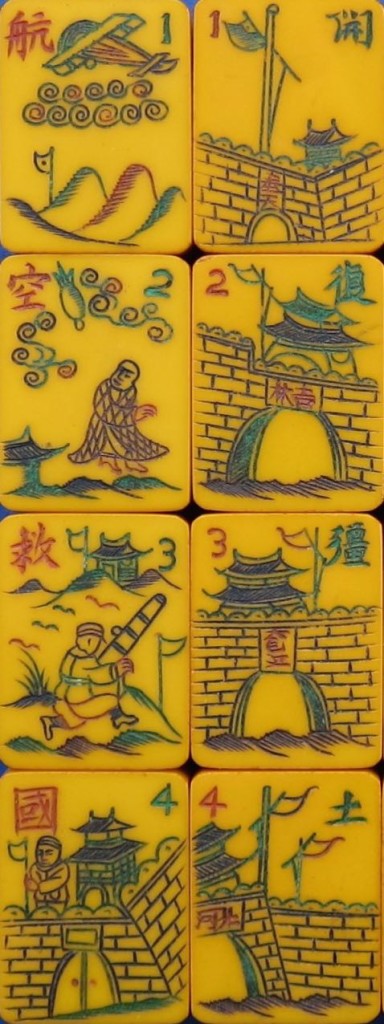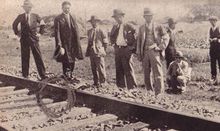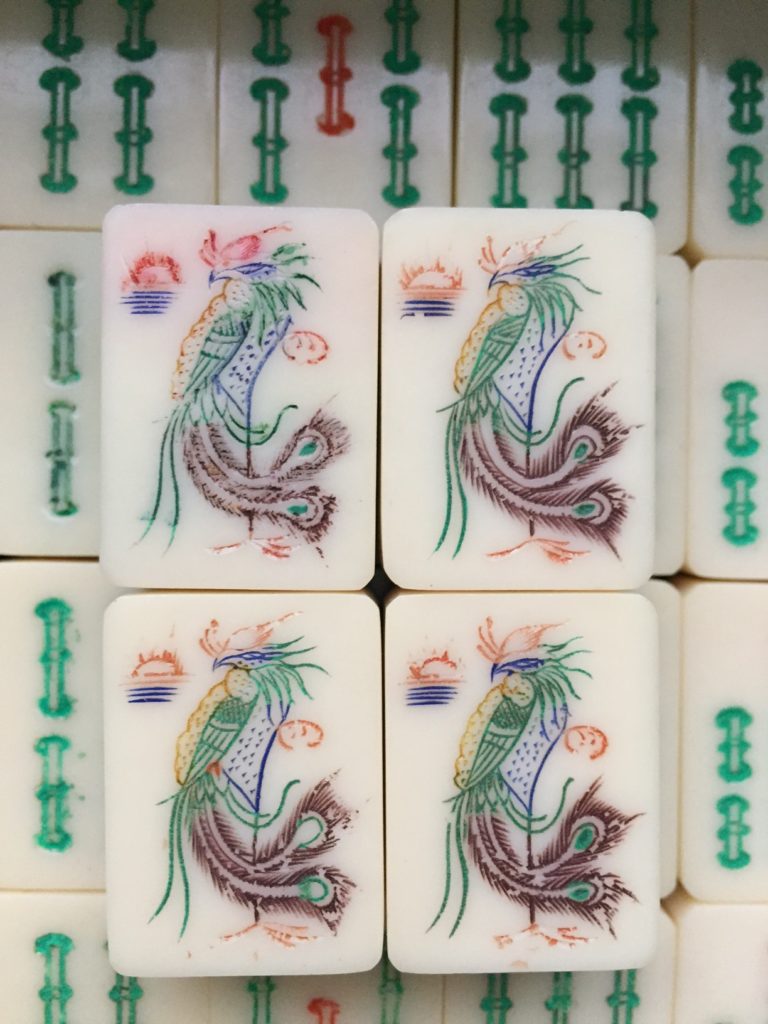
Singapore's residents have a long history of being enthusiastic about the game of Mahjong. In fact, Singapore even has its own version of the game, played with delightful "capture" Flower tiles. (Capture tiles are used in games where a player can win extra points by having certain Flower capture tiles. These special sets feature images of a cat and mouse, a rich man and a pot of gold, a rooster and a centipede, a fisherman and a fish, to name some examples.) But during the early days of the Sino-Japanese war, in the 1930s, seeing an increasingly aggressive Japan having invaded and taken over a part of China, Singapore was concerned about being "captured" by the Japanese. Other images began to appear on Mahjong tiles.
To set up the place Singapore occupied in history, in the 1930s it was a British colony with a large Chinese population. Beginning in 1906, some of the Chinese opponents of the Qing Dynasty in China took up residence there. According to Wikipedia:
"In 1906, the Tongmenghui, a revolutionary Chinese organisation dedicated to the overthrow of the Qing Dynasty and led by Sun Yat-sen, founded its Nanyang branch in Singapore, which served as the organisation's headquarters in Southeast Asia."
The Qing Dynasty was overthrown in 1912, and the Republic of China was established. After World War I, the British, who were in charge of the city, spent a lot of money in Singapore, building a naval base to protect British interests against the increasingly aggressive Japanese. When completed the base boasted the largest dry dock in the world, and the third largest floating dock. But there was one problem: there was no fleet of ships to dock there. The British thought they could get their fleet to Singapore in time to protect the port, but when WW2 actually broke out, the fleet was in Europe. Singapore was thus at the mercy of the Japanese. Singapore was right be be concerned. It was conquered by the Japanese in 1942 and subsequently occupied by them until 1945 when the city reverted to British control.
https://en.wikipedia.org/wiki/History_of_Singapore
In addition to the sets we commonly associate with Singapore, it seems Singapore was also involved with anti-Japanese propaganda in the 1930s. As a British outpost, with many Chinese inhabitants, it was sending out messages about wartime aggression too.
The tiles we will look at today came in this case:
Some of the characters translate to mean Singapore and Shanghai. Possibly this Mahjong business had branches in both cities. I had thought only the craftsmen in Hong Kong were involved in the anti-Japan Mahjong Business. It turns out that the craftsmen in Singapore were just as intent on getting the word out about the Japanese threat as those men working in China. (Caveat: I am assuming that this set was made in Singapore and not imported there. Given that there is a rich history of Mahjong in Singapore, it seems a likely premise.)
The suits and honors are not unusual, although that wonderful One Bam (seen above in the first photograph) does rank among the great One Bams. But it is the Flowers that cause us to sit up and take notice. There are 16 of them, and 12 of them refer directly to the war against Japan. With the exceptions of the 1 on the Bams and the numbers on the Flower tiles, there are no Arabic numbers or Western letters on the tiles. The set was not meant for export, but perhaps it was intended to fill the people with hope that they could defeat the enemy.
Above we see images of war: a soldier with a sword about to use it on an enemy, another about to throw grenades, an airplane and a bomb heading toward a Japanese man. We have seen many similar images before on other sets. (Search for War in the search box on this website.)
Row #1: fight against the enemy
Row # 2 to follow
Row #3: Open a New Territory (maybe take land back that had been taken over by the Japanese, such as Manchuria?)
Row #4: The tiles with the airplane have the well-known phrase from Dr Sun Yat Sen: Aviation Saves the Nation
According to friend Richard Y., these Flowers translate as team work, or working together. We see a merchant, scholar, farmer with sickle and soldier instead of the normally seen farmer, wood-cutter, fisherman and scholar. Perhaps these tiles can be interpreted to mean that by working together, they might be able to resist the enemy.
You will enjoy the bit of subtle advertising found on the One Dots, the tiles where messages are often hidden. Despite all the political propaganda, there was a bit of company/manufacturer propaganda:
Although not in the right order, they translate to mean:
"The color won't fade" !!
A big thanks to Richard and his friends for helping with the translations.

